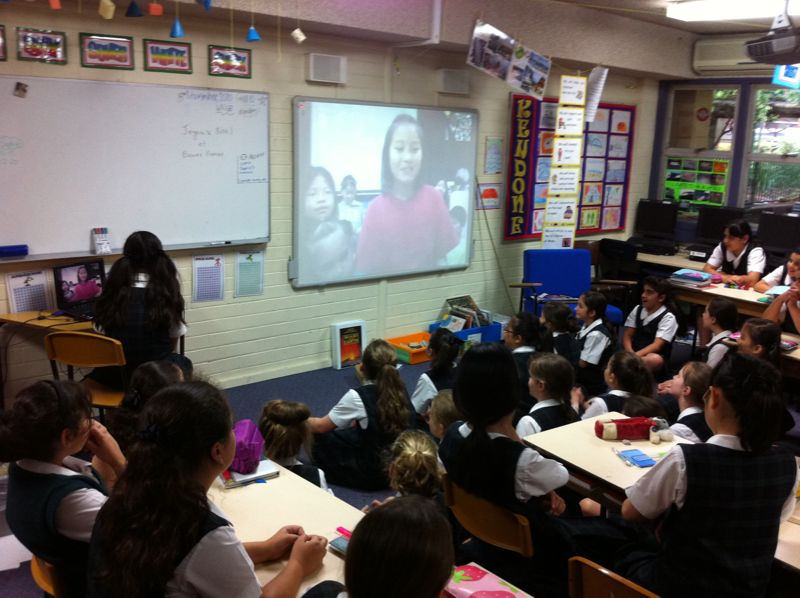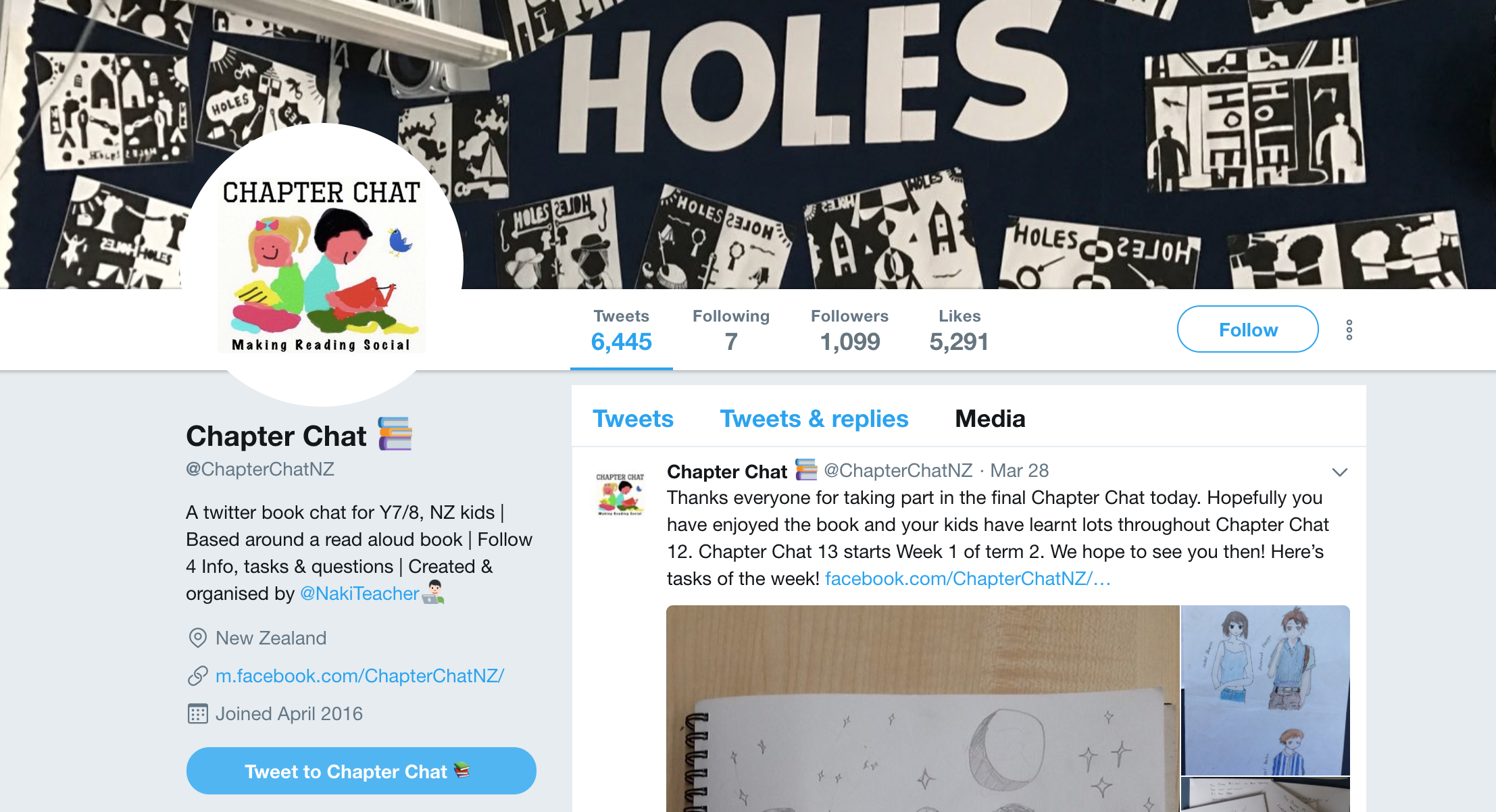Recent media debate about racism in New Zealand has got me thinking about ways we can help our students connect with each other, other cultures, other places and try to help them learn that diversity is awesome and empathy is powerful and important. This blog post will outline a few ways we can harness digital tools to do this.
A couple of days ago, (10.4.18), as I was chowing down on my breakfast and enjoying my coffee, I was watching ‘The AM Show’. I was listening to Duncan Garner criticise Taika Waititi for saying New Zealand was racist in an interview. This blog post is not going to debate my thoughts on that but if you want to know more you can check out the segment here, and the article where Taikia expressed his thoughts here. Kanoa Lloyd wrote a brilliant response which is worth a read as well.

The very next segment on ‘The AM Show’ was discussing bullying in schools. It blew my mind a little that they didn’t connect the dots with these two issues.
I’ve worked in schools in vastly different places in the world and I’ve got to say, from what I’ve seen in NZ schools, and from conversations with other NZ teachers, there is an underlying theme of racism quite often involved in the bullying that takes place in our playgrounds. I’ve heard awful, racist comments come out of the mouths of children and it upsets me to my core.
It doesn’t take much to continue to connect the dots to the fact that in New Zealand we have one of the highest youth suicide rates in the world. IN. THE. WORLD!
This blog post is not a debate about where this comes from or why. Instead, I thought it was a great opportunity to think about, and share some ways to connect students with each other, other cultures, other places, and try to help them learn that diversity is awesome and empathy is powerful and important.
[bctt tweet=”Teaching our students that diversity is awesome and empathy is powerful and important.” username=”lara_kirk”]
CONNECT WITH OTHER CLASSROOMS
With the incredible power of the internet and amazing, free tools on offer it’s so easy to connect to other students around the world. This would be a powerful experience for students of any age. There are so many ways to do this but I love…
Mystery Skype Calls or Mystery Location Calls – These are really similar. You connect with other classrooms around the world and set up a mystery call. During this call your class will work as a team to try and work out the location of other classrooms. Click on the links for more information. The time zones in New Zealand and Australia can make it a little more limiting but even calls within the same country are exciting. Once you’ve made a connection with a class why not keep in touch and learn more about each other via email, or Google Hangouts.

[bctt tweet=”Mystery calls can connect students with others all over the world” username=”lara_kirk”]
Chapter Chat – This is a community of New Zealand classrooms who are all reading the same novel and responding together through class Twitter accounts and Flipgrid. There are some great topics of conversation going on in the threads that should encourage deep thinking, connection and hopefully ways of looking at things from a new perspective. It is also a brilliant way for students to learn about social media and digital citizenship. There’s heaps of other great Flipgrids that are worth following. One that I especially like is called Our Global Classroom and it has great topics for discussion and offers a platform for students to connect and voice their thoughts and opinions.

Connect with experts – Use online tools to connect with people who have a different world view, or different experiences to you. Find out what you can, draw similarities and discuss differences. Skype, Google Hangouts…. there are multiple ways to do this.
EXPLORE THE WORLD ONLINE
Google Arts and Culture – If you haven’t explored this beautiful collection of images, video, art and history then you are missing out. You can take tours through the world’s greatest museums, get up close with artworks and places. They have themes ready to go and you can even make your own exhibitions collating the items you’d like your students to explore. The photography of artwork is beautiful – high resolution, you can even see the brush strokes. I don’t think I have the words to explain this so please just click on this link and have a look. Stunning!

[bctt tweet=”Teach empathy and understanding with Google Arts and Culture exhibits. ” username=”lara_kirk”]
Virtual Reality – Field trip budget not stretching to a class trip to Machu Picchu? Fancy popping up to the International Space Station to gain a little perspective on our place in the universe? Virtual Reality tools are becoming more and more accessible, allowing us to take our students to places that would have been impossible before. Connect students to places where the cultures are different to theirs, explore and develop a love for diversity and the world. I was lucky enough to experience Machu Picchu from a hot air balloon using Microsoft HoloLens. It was mind blowing. While that kind of equipment may be out of reach in your classroom budget, Google Cardboard + Google Expeditions allows you to explore the world using a low tech, low cost piece of equipment and an iPhone. Check out this video.
Google’s Geo Tools – These tools can teach much more than just Geography. You’re probably reasonably familiar with Google Maps and Earth, combine these with Tour Builder to create brilliant tours all over the globe. Your students can tell their own stories, or the stories of others within a Google Tour. There are some examples on the website that will get your creative juices flowing.
GENERATE DEBATE WITH VIDEOS
There are so many great videos out there that we can use to challenge our students thinking and help them to look at issues from a new perspective. Find videos that will generate debate. There are some great tools to help students focus and improve video comprehension. EdPuzzle and TedEd Lessons are great for setting up videos, with supporting questions for students to use. They will also keep track of what students have viewed and completed. You can embed video into Google Slides and even select the parts of the videos you want them to see.
[bctt tweet=”Find videos that will challenge your students thinking and force them to look at issues from a different perspective.” username=”lara_kirk”]
COLLABORATE
By collaborating students are working on their communication, problem solving, self-management and leadership skills. We want our students to come across situations where they need to discuss, disagree and compromise. Through doing this (with support and guidance) they will learn empathy and relationship skills. STEAM challenges like the ones found at CS Unplugged and other hands on activities can help students develop this within their own class. Minecraft Education Edition is a great way to encourage creativity and have students working together on projects. Using GSuite and O365 apps allows collaboration online – anytime, anywhere. With the right sharing settings you can have students sharing docs and working together with students from other places as well. I had a class of 11 year olds send a Google Form to 10 different countries and 30 different schools to gather data about ‘average 11 year olds’ around the world. It was awesome. They were so excited at the thought that other people were helping them out. Discussions around hair and eye colour difference, depending on location, was deep, powerful thinking for them. Soundtrap for Education is a music making app that allows people to connect with others all over the world to compile music. Their intro video gives you a good idea of how it works – nice and emotive to give you the feels too!
[bctt tweet=”Create opportunities for collaboration, conflict and compromise in your classroom” username=”lara_kirk”]
A long post from me, but racism, bullying and NZ’s astonishingly high youth suicide rate are issues that are close to my heart. Supporting kids to feel good about themselves and build self confidence were reasons why I got into teaching in the first place. Sometimes it can feel like we’re there to teach subjects not people. It’s good to have a reminder that we can do both, and that there are some amazing tools out there to support us in doing that.











